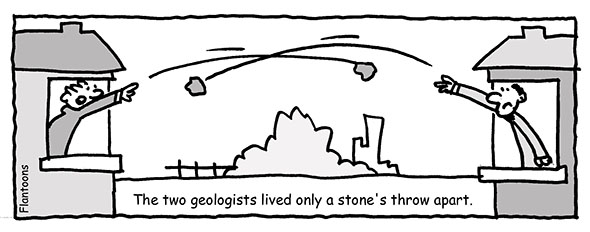
Did you know Montreal is the world’s largest fully bilingual city, ranked 8th among the 10 best cities to visit in the world? (‘Best in Travel 2013’ guide, Lonely Planet).
It is also the largest city in the Canadian province of Quebec and the second largest city in Canada.
But there’s so much more to it than that...
The short questions we put at the end of sentences are called question tags. They are normally used when speaking. There are many different question tags but the main idea is fairly straight forward.
Usually if the sentence is positive then the question tag is negative and if it is negative then the question tag is positive.
We use different verb forms to talk about the future. There are a few verb forms we use to talk about plans for the future. This depends on what kind of plans they are.
We use will to talk about a decision made at the time you are speaking. It was not a plan before that.
I think I’ll stay in tonight.
I just got a text from my mum. I’ll phone her later.
We don’t have any bread. I’ll buy some when I go out.
The present perfect is formed with the auxiliary have or has and the past participle. It is usually used to talk about the past in relation to the present. The present perfect has a connection between something that happened in the past and a present time. It often refers to an action that happened in the past and which has a result now:

This month’s cartoon is based on the popular phrase or expression ‘a stone’s throw’.
A geologist is a scientist who studies the solid and liquid substances, or matter, that make up the Earth. e.g. rocks and stones.
We use the future continuous to talk about something that will be in progress in the future.
Don't ring me between 4 o’clock and 5 o'clock. I'll be doing my workout at the gym.
The parade will be passing this corner at around 7 o'clock.
We also use the future continuous to speak about actions that we ‘think’ are happening as we speak.
They will be having lunch at this time.
The teams will be relaxing now as it’s almost two hours to the start of the game.
The preposition 'to' shows movement to a specific place or event.
I’m travelling to Spain next week.
I need to go to the bank.
Can you tell me the way to the post office?
Are you going to the party?
I’ve never been to a rugby match.
What time do you go to work?
We also use 'to' for movement towards a person or group of people:
He came up to me and started a conversation with me
The word enough can be used as an adjective, an adverb or with a noun. It can even be used as a pronoun.
Enough with an adjective
She wasn't tall enough to become a flight attendant.
This piece of writing isn’t good enough.
We have another metaphor mix for you! It would be a shame to stop at one set, now wouldn't it?
Remember: Just like a simile, the non-literal figure of speech referred to as a metaphor also compares two things, but it does so in a more direct way, this time without using as or like.
Two examples:
Christian has a heart of gold = Christian is very kind, generous or sincere
Don’t call him a slowcoach! = a person who acts or moves slowly
There are some verbs in English that do not take the continuous form even if the continuous form is normally used in that situation. We call these verbs state verbs.
So, we say I'm sorry, I don't understand' and not 'I am not understanding'.